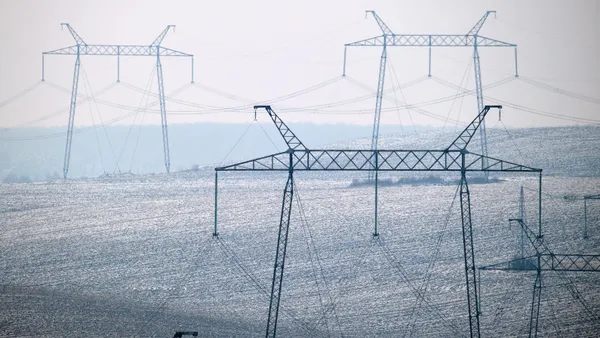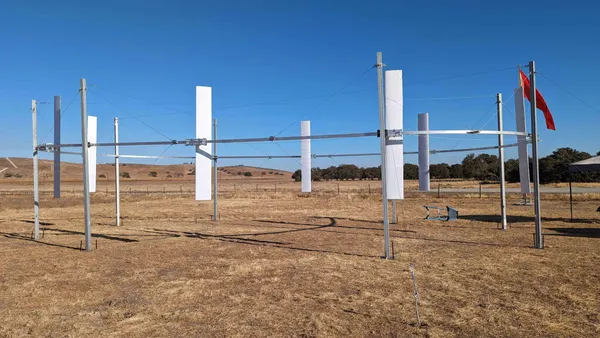Dive Brief:
- A working group from the U.S. Coast Guard released a study calling for limiting offshore wind development along the Outer Continential Shelf because of incompatibility with commercial shipping, the Checks and Balances Project reports.
- The study outlined what the authors termed as "dangers" offshore wind farms pose to shipping, calling for reduction of some blocks designed as potential sites for such ventures by the Bureau of Ocean Energy Management.
- According to one of the study's authors, Dana Goward, offshore wind projects could be a threat to the over 156,000 major vessel movements yearly along the East Coast.
Dive Insight:
The Checks and Balances Project noted the study's recommendation flies in the face of the success of European offshore wind farms, which arguably have some of the busiest shipping traffic in the world.
In a blogpost, study author Dana Goward, who is a former Coast Guard member, condemned the Obama administration's push to develop offshore wind projects.
"All these proposals were innocently (if improperly) made.," Goward wrote."Their preliminary environmental analyses did not even contemplate adverse impacts from additional maritime fuel consumption and emissions, the increased likelihood of oil spills, or the increase in risk to marine and human life."
The study's purpose was to "to address the potential navigational safety risks associated with the development of offshore renewable energy installations (primarily wind farms) and to support future marine spatial planning efforts."
In doing so, the study aims to evaluate the impact of siting, constructing and operating offshore wind farms on "routing measures." Concerns outlined in the study includes how the way offshore wind technology could increase the possiblity of collision between vesells
Installing wind farms in a previously open space, like the Outer Continential Shelf, increases the “risk of collision between vessels and/or increase risk of a grounding,” the study concluded. Rerouting caused by wind installations could also force smaller vessels farther offshore and put them at risk of encounters with deep draft vessels moving at higher speeds.












